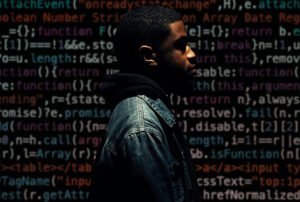
A year ago, in Biden v. Nebraska, the US Supreme Court struck down President Joe Biden’s executive order to cancel up to $20,000 in debt per borrower. Since then, the Biden administration has taken incremental steps to reduce debt. As of January 2024, 3.7 million Americans had received a total of $136.6 billion in debt forgiveness. By April, those numbers had increased to $153 billion for 4.3 million Americans. But most Americans with student debt have still not received any forgiveness to date.
A new Biden administration proposal could change that. In early April, the administration made two important policy announcements: one alters how student loans are serviced, and the other promises to cancel up to $20,000 in debt per person for over 25 million Americans and possibly as many as 30 million Americans.
How does the new plan compare with the original 2022 plan? Will it stand up to legal scrutiny? And what do borrowers need to know about the upcoming changes in servicing?
Understanding the New Debt Cancellation Plan
The new plan to cancel student debt, announced by Biden on April 8, is available on the studentaid.gov, the Federal Student Aid website. The new plan is quite different than Biden’s earlier proposal. The 2022 plan Biden had promoted was promulgated under the 2003 Higher Education Relief Opportunities for Students (HEROES) Act, which authorized debt forgiveness in the case of a war or emergency. In Biden’s case, the stated emergency was the COVID-19 pandemic. By contrast, the new plan leverages authority provided by the 1965 Higher Education Act. Specifically, the new plan would:
Fewer than half of all borrowers have been able to reduce their outstanding loan balance through regular payments.
- Cancel up to $20,000 in interest for all borrowers who have accrued or capitalized interest on their loans since entering repayment. In other words, to be eligible for this provision, the borrower must owe more money to the federal government than they originally borrowed. This is the single most important provision, and it alone is estimated to benefit over 25 million borrowers.
- Automatically cancel debt for borrowers otherwise eligible for loan forgiveness under existing income-driven repayment (IDR) plans. This measure would apply to borrowers who qualify for the Saving on a Valuable Education (SAVE) plan (described in more detail here) or the Public Service Loan Forgiveness program, which covers public and nonprofit sector workers.
- Cancel student debt for borrowers with undergraduate loans who entered repayment at least 20 years ago and debt for graduate school borrowers who entered repayment at least 25 years ago: This provision would correct processing errors since, legally, all debt is supposed to be forgiven after that many years have elapsed. It is estimated that 2.5 million Americans would benefit from this provision. This means that, sadly, 2.5 million Americans are presently making payments on debt that they legally do not owe.
- Cancel student debt for borrowers who previously enrolled in low-financial-value programs. This provision forgives debt accrued by students who enrolled in universities, many of which were for-profit, that failed to provide an adequate education.
- Cancel student debt for borrowers experiencing hardship that prevents them from fully paying back their loans now or in the future. This provision would, reports CBS News, “cover borrowers at high risk of defaulting on their student loans or who are grappling with issues like medical debt.”
The federal student loan program is famously opaque. But don’t let arcane details get in the way of understanding the high stakes. The existing system has well-documented negative effects, including delayed marriage and homeownership, retarding small business formation, and reducing retirement savings levels and overall family economic stability. Lowering the debt overhang could reverse many of these negative trends.
The scale of the challenge remains enormous. How big? Consider that of an estimated 43.2 million federal student loan borrowers; at least 25 million (a minimum of 57.8 percent of all borrowers) are expected to qualify under a provision that only applies to borrowers who owe more money than they originally borrowed.
As reporter Sequoia Carrillo pointed out on NPR’s All Things Considered, “More than 25 million borrowers owe more now in student loans than what they initially took out, and that’s because of interest.” It’s hard to find a starker illustration of the dysfunctionality of the present system than the fact that fewer than half of all borrowers have been able to reduce their outstanding loan balance through regular payments.
The good news: if Biden’s plan holds, the steps listed above will occur automatically. Borrowers will not miss out on them due to things like a lack of awareness since they will not have to apply for them.
Will Biden’s “Plan B” Stick?
The above plans to cancel student debt are not the final plans; this will take months as it moves through negotiated rulemaking. The process started in the fall of 2023—and includes a public comment segment.
NAACP Youth and College Division national director Wisdom Cole, who was a part of the negotiations, is aware that implementation could be a hurdle. As Cole puts it, “We’ve seen this before where we’ve been able to put out these rules, but part of also making sure people get their debt relief is the process and the implementation of it, making sure that we are implementing this in a way where everybody has access to this, and it’s broad enough for folks to enter into this system.”
The new plan…uses existing authority from the very legislation that created the federal student loan program.
Already, there has been pushback. President Maya MacGuineas of the Commission for a Responsible Federal Budget issued a statement: “You can’t solve a very real debt problem by issuing more debt.” The debt she writes about is the profit the federal government makes off the backs of college students, the interest that compounds daily, and which, as noted above, results in many student borrowers being compelled to pay back amounts far exceeding what they originally took out in loans.
There is also the possibility of another lawsuit. Already, the Wall Street Journal reports that an effort to challenge Biden’s new plan in court is afoot among several Republican state attorneys general.
That said, the same article reports that legal experts such as Derek Black, a law professor at the University of South Carolina, consider the new rules more legally defensible than the 2022 rules. The article does not fully lay out these reasons, but there are some obvious ones. First, unlike the previous plan, the new plan is aimed at faithfully implementing existing forgiveness programs and otherwise is focused on reducing existing debt rather than canceling debt entirely, as the original program had done. Second, the new plan does not rely on a connection between debt forgiveness and COVID—always a tenuous connection—but instead uses existing authority from the very legislation that created the federal student loan program.
Sign up for our free newsletters
Subscribe to NPQ's newsletters to have our top stories delivered directly to your inbox.
By signing up, you agree to our privacy policy and terms of use, and to receive messages from NPQ and our partners.
Nonetheless, given the current highly conservative US Supreme Court, no one should be under any illusions that Biden’s “Plan B” will sail through unchallenged. Indeed, in the same Wall Street Journal article, another law professor, Cary Coglianese at the University of Pennsylvania, notes that if the court decides to limit “Chevron deference” (a doctrine that says the court should defer to the expertise of regulatory agencies in most instances) as two cases on this year’s docket call on the court to do—then the odds of Biden’s plan being upheld would be considerably diminished.
Changes to PSLF Servicing
In addition to the proposed new debt cancellation policies, the US Department of Education will soon take over the servicing of the Public Service Loan Forgiveness (PSLF) program, which was created in 2007 to enable borrowers who work for nonprofits or public sector employers for 10 years to get their remaining debt forgiven, provided they make 120 monthly student loan payments on time.
The program is currently administered by the Missouri Higher Education Loan Authority (MOHELA) since 2022. The Pennsylvania Higher Education Department, which used to administer the program, quit in 2021 in response to the high level of complaints it received, as well as lawsuits filed by the attorneys general of New York and Massachusetts.
These changes are part of a larger effort to upgrade the servicing of student loans and have all borrowers access a single Federal Student Aid-branded repayment portal. The US Education Department is splitting up the work among several contractors. Companies will be tasked with tracking a borrower’s progress toward loan forgiveness, providing support and answering complaints, as well as processing applications through the StudentAid.gov website.
The goal is for the US Department of Education to assume direct control over the program. This makes sense, but there could be implementation snags.
The US Department of Education [recommends] that borrowers take screenshots…[of] their payment history before April 30.
Will the US Department of Education Learn from Its Last Web Portal Rollout?
As some NPQ readers may recall—particularly incoming first-year college students or those who have children entering college next year—the rollout of the new FAFSA (Free Application for Federal Student Aid) form was plagued with so many problems that colleges and universities this spring had to delay admissions decisions.
The same team, hopefully having learned from the botched FAFSA rollout, is responsible for developing the new student loan platform. In theory, the redesigned website will deliver a streamlined dashboard for borrowers to track their payment count, see their forgiveness application status, and electronically sign forms. A borrower can do this now on MOHELA, but it is a slow process. For example, it takes 30 days to process an employment certification. And it takes at least 90 days to process a loan forgiveness application after all payments have been made and certified. The US Department of Education promises the new process will be much faster.
One concerning issue: to move the servicing over to the studentaid.gov site, the system will be paused from May 1 through July. As a student loan borrower myself, I have experienced this. I made the qualifying payments and received PSLF certification for loan forgiveness in March. However, the MOHELA website states that it will take 90 days to process the forgiveness document. That was long, but now it is longer—extended until July. Anyone in a similar situation should put their loan on forbearance while they wait. And, if you owe money, don’t skip payments. Payments must be made while MOHELA and studentaid.gov are on pause!
The US Department of Education has taken the extraordinary step of recommending that borrowers take screenshots or print the pages that list the number of payments made and their payment history before April 30 because borrower information will not be accessible after May 1. And if the new system has errors when it appears, hopefully in July, borrowers will need proof of where they are in payments.
What Comes Next?
Each debt cancellation step gives hope to those who have labored under the weight of debt, in many cases for over two decades. But each step brings considerable peril. Sometimes the peril, as with debt cancellation programs, concerns political and legal resistance. Sometimes, as with servicing, the peril is largely administrative.
There is good news and bad news here. The good news is that 2023 marks the first year on record that the total amount of federal student debt went down. The bad news is that student loan debt remains very high, with $1.602 trillion owed to the federal government and an additional $125 billion in private debt. The resulting $1.73 trillion total is roughly the same as it was in 2021, or about $40,000 per borrower on average for the nation’s 43.2 million borrowers—a debt overhang that restricts economic opportunity for millions of families.
As the solutions in Biden’s “Plan B” illustrate, the challenges are multifaceted, which is why the proposal has five prongs and not one. To date, the incremental approach has brought meaningful progress to those who have benefitted, but much work remains to be done to truly leash the federal student loan debt monster.













